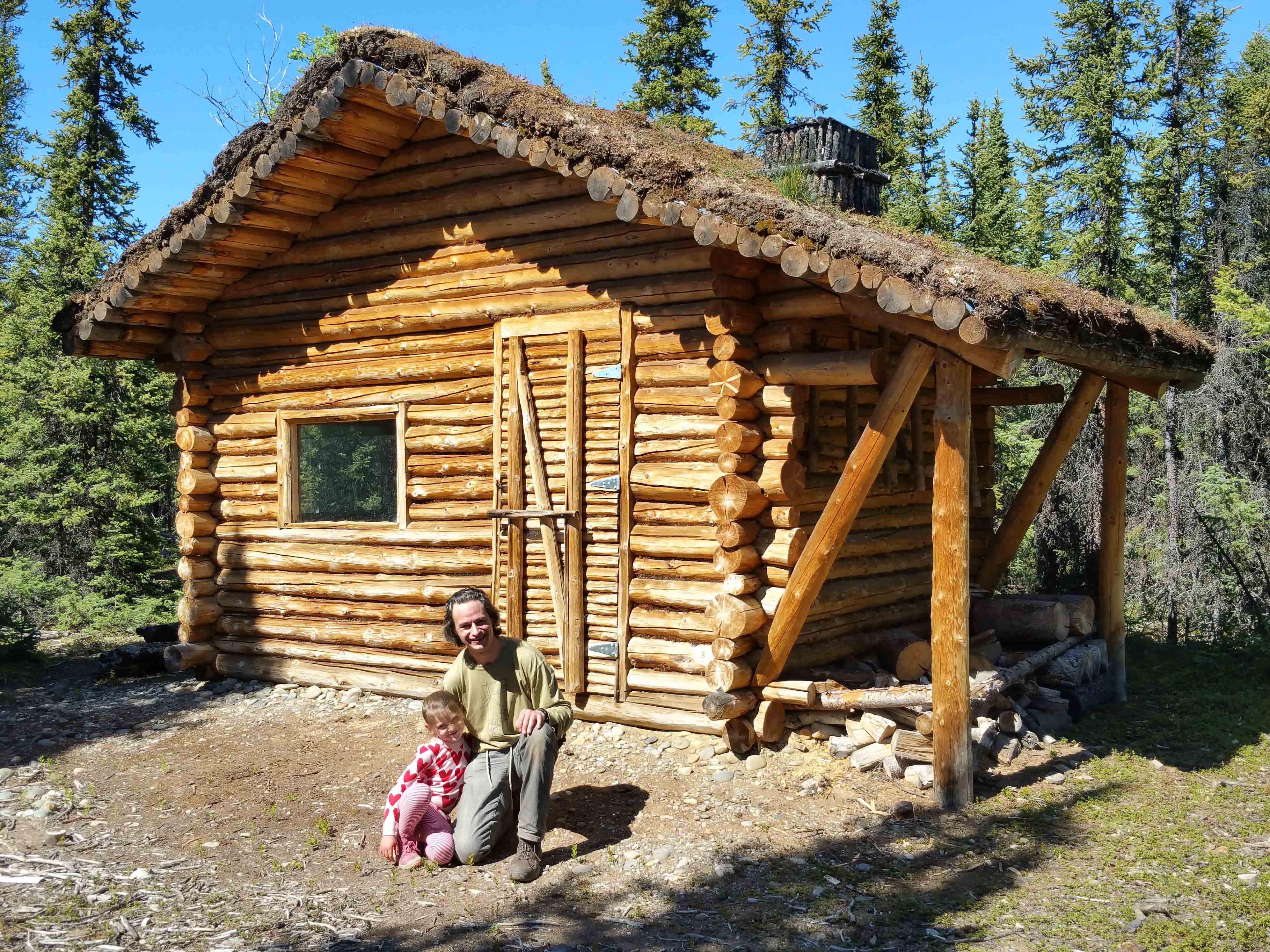Tiny Cabin was First in His Career of Sustainable Building

By Kris Capps for the Fairbanks Daily News-Miner, reprinted with permission.
In the early 2000s, Tom Marsik was a young student from the Czech Republic who dreamed of building a cabin in the wilderness and living in a pristine environment.
“I wanted to experience this life without modern technologies,” said Marsik, who is now an associate professor of sustainable energy at the University of Alaska Fairbanks.
When he first came to Alaska, he washed buses at Denali National Park. In 2001, he became friends with Bill Nemec, a park mechanic who lived in the Clear/Kobe area.
“I told Bill my dream to build a log cabin in the wilderness,” Marsik said. “He quickly educated me and said I can’t just go into the woods. He said, ‘Guess what? I have 160 acres in the wilderness and you can build your cabin on my land.’”
“I took Bill up on that and built a cabin,” he said. “I started building in 2003 and applied to stay for the winter.”
“I wanted to build from natural materials as much as possible,” Marsik said.
A friend helped initially. The small cabin was log chinked with moss and had a sod
roof. Marsik lived in the cabin that winter of 2003-2004 and endured temperatures
as cold as 40 degrees below zero.
Shortly thereafter, he went on to continue his education and earn his Ph.D. He built
a hyper-efficient home in Dillingham that was certified as the “Tightest Residential
Building” by the World Record Academy. This is an organization dedicated to chronicling
these kinds of records.
The last time Marsik visited the cabin was about one year ago. He is grateful he was able to take his young daughter Denali there to see it.
Over the years, Marsik shared many public presentations about that long-ago project. Ironically, he gave that same presentation in early July for the Denali Education Center, probably at the same moment the cabin was burning down.
“It could very well be the cabin was lost in flames the day I was giving a presentation about my cabin,” he said.
After the presentation and a family trip to Byers Lake, he stopped at the entrance to Kobe Road on the way home and talked to firefighters. The entrance to Kobe Road was where firefighters accessed the Clear Fire to try to control it. The update posted at Kobe Road showed the fire had moved past his cabin.
“I knew there was a very good possibility my cabin was likely gone,” he said. “I knew the fire went through there.”
Sadly he was right.
“I’m at peace with that,” he said. “My adventure wasn’t really about the cabin. It was about the experience. That experience doesn’t go away.”
“Other structures, when they burn down, kind of leave a mess,” he said.
“My cabin came from nature and it went back to nature. I feel good about that aspect. The only thing that didn’t burn was the wood stove and stove pipe.”
Of course, he used nails during construction, but there were no toxic chemicals to
pollute the environment.
His life work now is focusing on green building and he thinks of that cabin-building
project as the foundation of his work.
“I do like to make that connection,” he said. “It was a way to be more sustainable and more thoughtful for future generations.”


